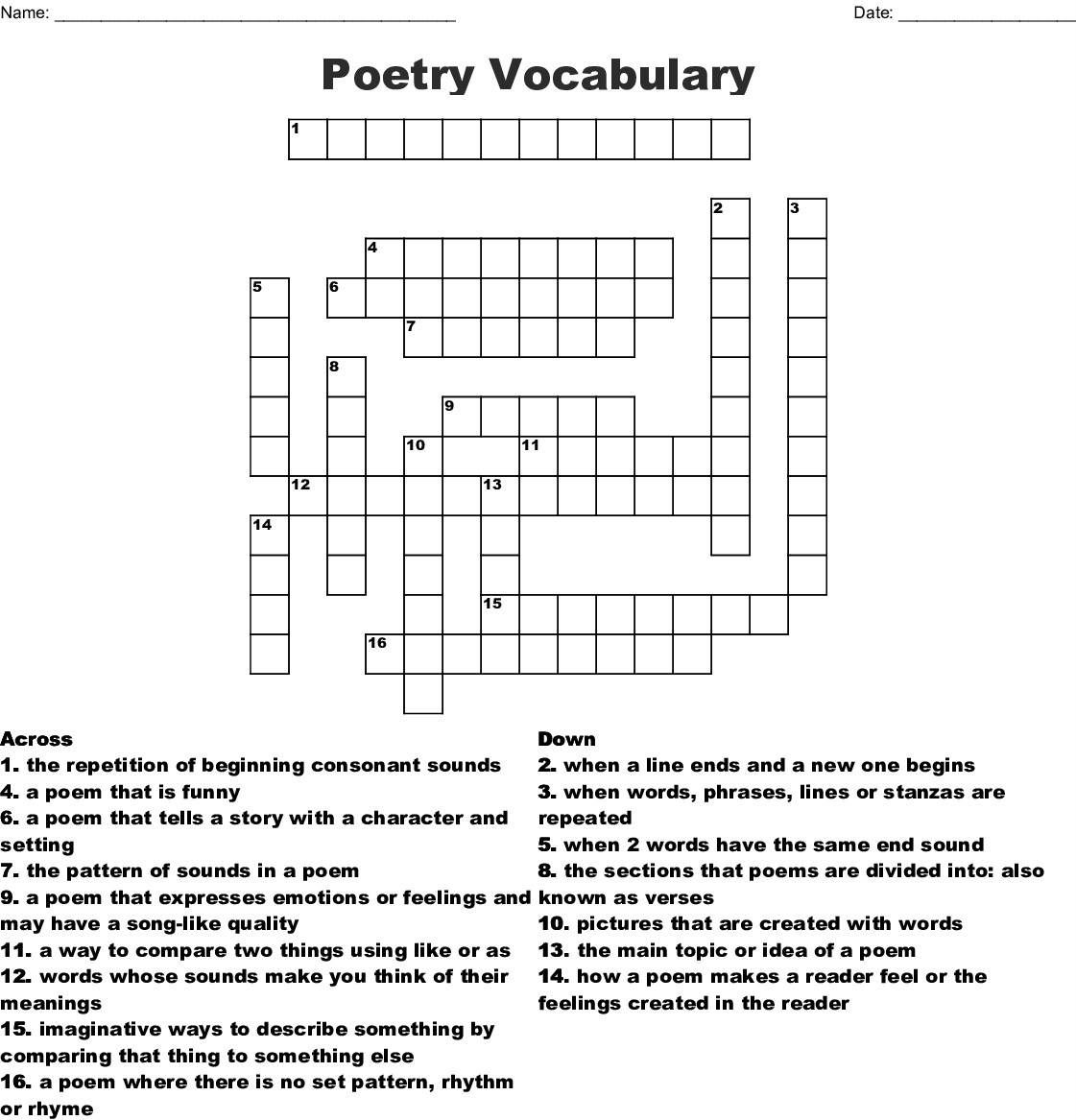
 Poetry Is... Activity Sheet
Poetry Is... Activity Sheet
Chatterbooks in Lockdown
Back to Children Home | Back to Books and Reading | Back to Chatterbooks in Lockdown
POETRY IS... nothing to be scared of! It is simply another way of using words to get across a message or a feeling. It might look a bit different, but once you get the hang of it, I am sure you will love reading it... and having a go at writing it!
What is Poetry?
Poetry is a particular style of writing, which attempts to stir the readers' imagination or emotions. This is done by the poet's careful choice and arrangement of language for its meaning,
sound and rhythm.
If the writing is not poetry, it is called "prose". This is the style of writing you are more familiar with. Examples of prose are essays, novels, plays. The word, "prose" comes from a
Latin word, meaning "straightforward2 – thus prose is a straightforward type of writing with paragraphs, sentences and usual punctuation.
Prose and Poetry - What's the difference?
| Prose | Poetry |
| Used in most everyday writing | Used for expressing something special in a more artistic way |
| Straightforward language | More decorative language. More comparisons. Rhyme and rhythm make it sound different. BUT poetry does NOT have to rhyme! |
| Ideas are in sentences arranged in paragraphs | Ideas are in lines that may or may not be in sentences. Lines may be arranged in stanzas (verses) |
| There are no line breaks. Sentences run to the right margin | Poetry uses line breaks – for purposes of rhythm or for emphasis. Lines can be very long – or very short |
| The first word of each sentence is capitalized | Traditionally the first letter of every line is capitalized |
| Prose resembles large blocks of words | The shape of poetry can vary, depending on line length |
Different Types of Poetry
- Limerick – 5- line witty poem with a distinctive rhythm - AABBA – 1st, 2nd and 5th lines rhyme
- Haiku – ancient form of writing – small- 3 lines, each a phrase
- Narrative – tells story of an event in a poem (Epic is a long narrative poem)
- Sonnet – short rhyming poem – 14 lines – used by Shakespeare – iambic pentameter- line ending rhyme
- Couplet- 2 lines of verse which form a unit alone or as part of a poem. Rhyming
- Elegy – sad lament over the death of a loved one
- Acrostic – read down the first letters of the poem’s lines, to get a word that is the poem’s subject
- Free verse – no rules
How to Write a Really Good Poem
Anyone can write a really good poem. All you need is time, imagination and a lot of scrap paper!
Writing a poem will take time. It's not enough to bung down a few words on paper and think "done"! A good poet refines and revises until they are completely satisfied with every word.
A really good poem is not just a handful of words that rhyme strung together. Rhyming is not always necessary and sometimes it sounds silly and forced.
Before you put pen to paper, do your homework. Read poems by such children's poets as Michael Rosen, Roger McGough, Carol Ann Duffy, Roald Dahl and see how they do it.
Preparation
You will need lots of scrap paper for ideas and attempts at writing. Writing on a laptop or tablet also works well because it allows you to correct, amend and reorganise your words.
Switch your brain on and think... What will your poem be about? What type of poem will you write? (see above) What will the tone (mood) of your poem be? (funny, sad, etc).
Putting Pen to Paper
It may help you to make a table:
| Subjects | Themes | Key Words |
| What will it be about? Some ideas: People and places, I love Things I enjoy Memories Life – questions I have |
Within your chosen subject, list themes you might like to explore. For example: Lockdown What I am doing? What I am unable to do? How that makes me feel? How it will change me? |
Make lists of words that you might use in your poem. Descriptive words Words that express feelings (happy, sad, bored etc) Use of senses – sights, smells, sounds Your favourite words |
First Draft
You have chosen your subject and your themes, have decided upon what style of poem you will write and what the mood of it will be. You can now start writing down ideas based around your key words. You won’t get it right first time – the words are there to be played with. Think about:
- Alliteration – words that start with the same letter (I long to linger in the lovely library)
- Onomatapoeia – a big word meaning a word that sounds like the thing it is describing. (pop)
- Similies – where 2 things are compared for effect using ‘like’ or ‘as’ (busy as a bee)
- Repetition – repeating a word (s) gives emphasis
- Rhyme – if your poem is light hearted or humorous, rhyme can be very effective.
- Line breaks – where the line should end, is obvious if your poem rhymes. If not think carefully where to put in a break for the best effect.
Refine Refine Refine
Reread your poem over and over again. Read it out loud to yourself or to another. Think about how it sounds. Is the rhythm right? Do you have too many words in a sentence? Too few? Then...send it to us for Poetry Connect. Poetry is made for sharing!
Poetry Crossword
How much have you learnt? Have a go at this poetry crossword.

Page last updated: 22nd May 2020
